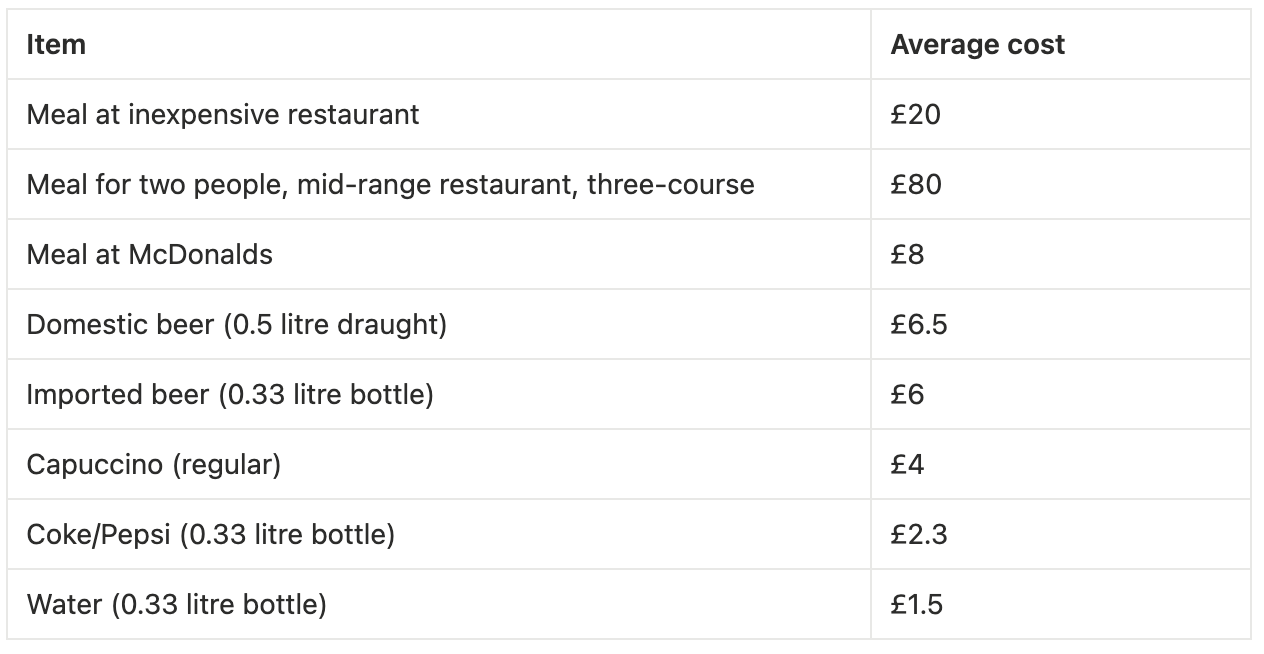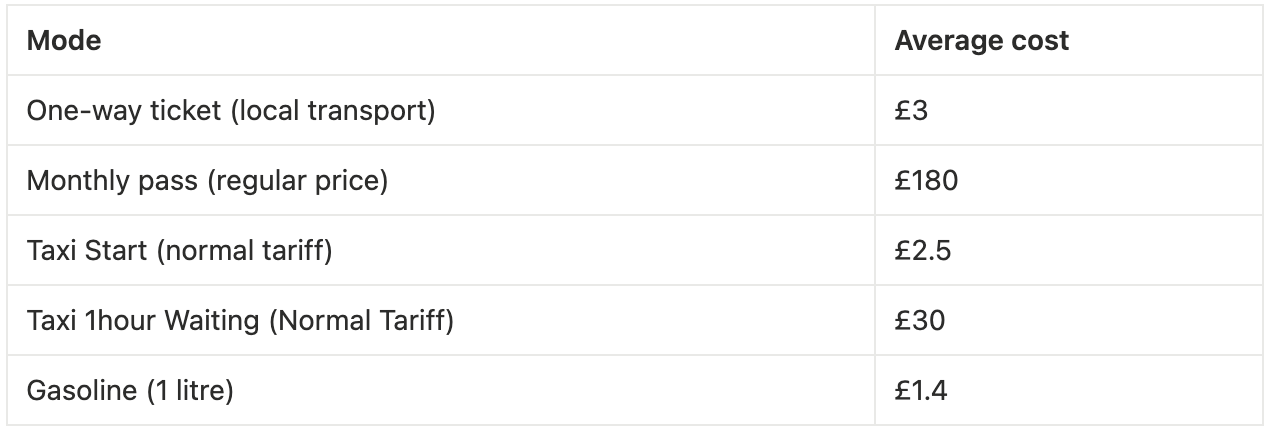

I must have been about five or six years old the first time I heard about London. It was from the “London Bridge is falling down” rhyme, which every child my age seemed to know by heart. Unfortunately, I can’t say the same for myself anymore. I barely remember the full lyrics now.
Imagine my surprise when, years later, I learned that the actual London Bridge had never fallen; instead, it required many repairs over the years.
These days, I associate London less with collapsing bridges and more with people falling head over heels for the chance to visit or stay.
It’s one of the most cosmopolitan cities in the world, and you’ll find communities of nearly every nationality there. Rumour has it that even Martians have settled there. Don’t quote me, please. I’m just a writer who happens to believe in aliens.
Now, if you still want to move to London despite the presence of the imaginary Martian community I’ve created, I’m sure you’ll be wondering what living there is like and, more importantly, what it costs.
Here’s a breakdown of all the expenses you’ll encounter. We’ll cover rent, transportation, food, utilities, and other essential expenses that people often overlook. And of course, everything will be in British, not Martian pounds.
Also read: How Grey differs from a UK bank
Short answer, yes.
It consistently ranks among Europe’s most expensive cities, often compared to Paris, and New York when it comes to housing, dining, and transport costs. Rent alone can take up anywhere from 40-60% of your monthly income, depending on where you live and how you manage expenses.
For a single person, excluding rent, you’re looking at around £1,000 - £1,200, while a family of four might spend £3,500 - £4,000. London’s appeal is undeniable, but you’ll need to budget carefully to enjoy it without breaking the bank.
London’s housing market is huge, and rent prices vary dramatically depending on which zone you live in. The city is divided into six main zones, with Zone 1 being the heart of London. It’s home to landmarks like Westminster, Soho, and Kensington, and Zone 6 covers the farthest suburban areas.
The closer you are to Zone 1, the more you’ll pay for the convenience of being near offices, restaurants, and nightlife. A one-bedroom apartment in Zone 1 can cost around £2,300 - £2,700 per month, while neighbourhoods in Zone 2, such as Stratford or Greenwich, average £1,700 -£2,000. When you move farther out to Zones 4 - 6, in places like Croydon, Ilford, or Hounslow, you can find similar flats for £1,200 - £1,500, though your daily commute will take longer.
Most Londoners balance affordability and access by living between Zones 2 and 4, where you’ll still have reliable Tube connections without the central London price tag. Sharing accommodation or renting a room in a flatshare remains one of the most practical ways to save.

Buying a home in London isn’t for the faint of heart or the light of wallet. The city consistently ranks among the most expensive property markets in the world, with prices varying sharply across transport zones and property types.
Most London homes fall into two main categories: flats (apartments), which dominate Zones 1-3, and houses, which are more common in outer Zones 4 - 6. If you’re eyeing a flat in central areas like Chelsea, Kensington, or Mayfair, prepare to pay around £17,000 - £20,000 per square metre, with luxury developments reaching as high as £25,000 - £30,000. Even smaller one-bedroom units in these postcodes can easily exceed £1 million.
Moving outward makes a dramatic difference. In Zones 3 - 4 (Wimbledon, Greenwich, or Hackney), average prices fall to £9,000 – £12,000 per square metre, while in Zones 5 - 6 (Croydon, Bromley, or Ilford), you’ll find newer builds or family houses for £6,000 - £8,000 per square metre. However, commuting costs tend to increase, so it’s a trade-off between affordability and convenience.
For most expats, students, and digital nomads, renting remains the more practical option. However, if you’re staying long-term, London offers several first-time buyer schemes, such as Shared Ownership and Help to Buy, which allow for partial ownership or reduced deposits. Mortgages for foreign buyers are also possible, though they often require higher down payments (typically 25–40%) and proof of UK income.

Also read: Cost of living in Manila
London’s food scene is huge. The city caters to every taste and well, most budgets. Eating out regularly can get expensive. A meal for two at a mid-range restaurant averages £70 - £80, while a casual lunch might set you back £15 - £20.
That said, you can save quite a bit by mixing in home cooking or quick bites. Supermarket meal deals (typically around £4 - £5) are a local favourite for office workers, and markets like Borough, Camden, or Maltby Street offer gourmet options without the fine-dining markup. Coffee lovers should expect to pay around £3.50 - £4.50 for a cappuccino, depending on the café and neighbourhood.

LDMAG1
Prices vary depending on where you shop. Premium stores like Waitrose and M&S are more expensive, while Aldi, Lidl, and Asda are generally cheaper. A weekly grocery run for one person typically falls between £40 and £70, depending on dietary preferences and shopping habits.
Buying local produce or opting for supermarket brands can make a noticeable difference. For example, a litre of milk costs about £1.30, a loaf of bread £1.60, and a dozen eggs around £3.50. Meat and dairy products are pricier, while fruits and vegetables remain reasonably priced year-round. Londoners who shop at farmers’ markets may pay a little extra, but the freshness and quality often justify the spend.

London’s public transport is reliable and well-integrated, but it’s not cheap. The Oyster card and contactless payment system make commuting convenient, though prices depend on your travel zones. A single Tube ride in Zone 1 costs about £2.80 - £3.40, while a monthly pass covering Zones 1 - 3 costs around £180.
Many digital nomads and remote workers skip the commute altogether and rely on walking or cycling, especially in central neighbourhoods. Gasoline prices are around £1.40 per litre, so many people consider owning a car to be impractical unless you live outside the city centre. However, London’s buses make getting around relatively stress-free.

Also read: Cost of living in London vs New York: A full comparison
Once you’ve settled in, Monthly utilities will add roughly £250 - £300 to your expenses. This covers electricity, heating, water, and waste collection for an average 85m² apartment. London’s chilly winters can increase energy bills, especially in older flats with poor insulation.
The internet is fast and reliable, with unlimited broadband plans starting around £30 - £35 per month, while mobile plans average £10 - £15 with generous data bundles. Many digital nomads also rely on public Wi-Fi, which is widely available in cafés and libraries. Overall, utilities remain manageable as long as you’re mindful of seasonal fluctuations.

Also read: Cost of living in Cairo
You can never run out of things to do in London. London never runs out of things to do. There are concerts, exhibitions, football matches, cinemas, and a pub around almost every corner. One of my life’s wishes is to watch an actual Chelsea FC match at Stamford Bridge. We’re the pride of London anyway. The Premier League ticket prices vary widely for each club, but the Premier League has capped away game tickets at £30.
A gym membership typically costs around £30 - £50 per month, although premium studios can charge more. If you prefer something indoors, cinemas are really popular. A movie ticket is about £15. In contrast, a pint at the pub costs around £6 - £7. There are many other enjoyable experiences, including museums, galleries, and public parks, which are open to everyone. Finding a balance between paid activities and free exploration is the key to enjoying London without overspending.

Raising children in London is rewarding but undeniably expensive. Private preschool fees average around £1,900 per month, while international schools can charge upwards of £13,000 per year. Many families explore public school options or relocate to commuter towns for more affordable childcare and housing.
Childcare costs often rival rent in smaller cities, so careful budgeting is key for families relocating to London. Digital nomads with kids may want to research flexible daycare options or community programmes, especially if both parents work remotely. Some even choose to homeschool to cut costs. What matters best is choosing what works for you.

Yes, if you plan wisely. London rewards ambition, creativity, and curiosity. The city’s career opportunities, cultural diversity, and sheer energy are unmatched. Still, living comfortably here depends on your income and how you manage expenses.
With the right budget strategy, you can enjoy everything London has to offer without being weighed down by the high costs.
Also read: Summer vacation ideas for families in the UK
Managing money as an international student or freelancer in London can get tricky, especially if you’re earning in a foreign currency. The UK has a well-developed banking system, but fees and exchange rates vary depending on the type of account you open.
Major players like Barclays, Lloyds, HSBC, and NatWest are all solid options for everyday banking. You can open student and international accounts that come with debit cards, online banking, and access to thousands of ATMs across the UK. HSBC is particularly popular with international students due to its global presence, while Monzo and Revolut stand out for their digital-first experiences, budgeting tools, and low domestic transfer fees.
That said, most UK banks charge high conversion and international transfer fees, sometimes between 2% and 5%, when you’re receiving money from abroad. Processing times can also stretch to several days, depending on your sender’s bank or currency region. This makes traditional banking less efficient for freelancers or students who get paid in foreign currency.
If you’re paid in foreign currencies, you’ll want something more flexible. A multicurrency account is perfect for this. It allows you to receive, hold, and convert various currencies at competitive rates, without the hidden costs that banks typically add.
Personally, I’d recommend Grey. It’s a reliable option built specifically for people who live and earn globally. You can open a free multicurrency account in minutes, receive payments in USD, GBP, or EUR, and convert seamlessly to pounds when rates work best for you.
With Grey, you get more control over your money, spend less on conversion, and save time managing multiple accounts. It’s a small switch that makes a big difference when living and earning abroad. Open a free Grey account or download the app and take the stress out of getting paid in London.
Disclaimer: This article is based on researched data and is intended to give readers a general overview of the cost of living in London. The figures provided are estimates gathered at the time of writing and may vary depending on location, lifestyle, and market changes.




.svg)
Back to top